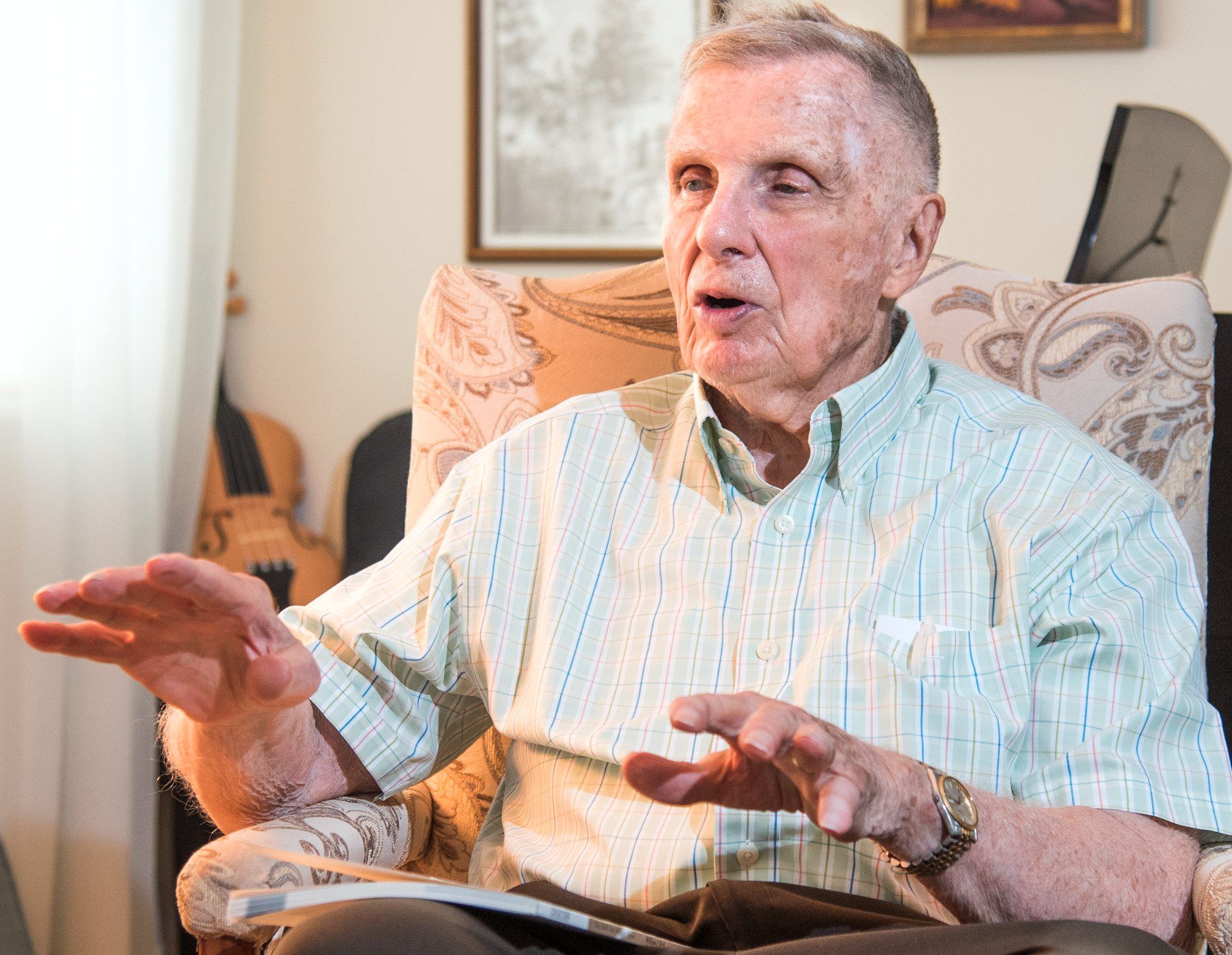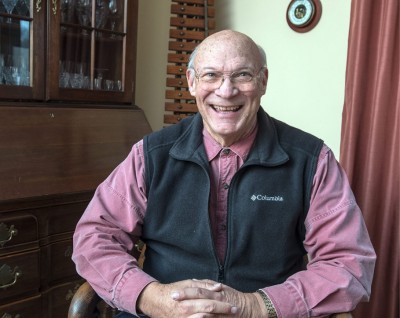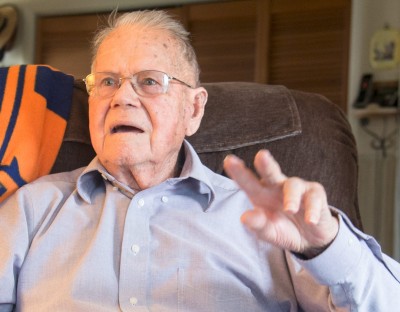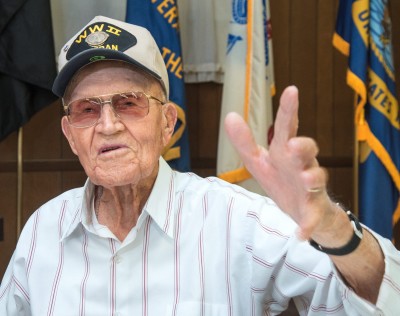William Hall
By Paul Wood

Photo By Robin Scholz/The News-Gazette
URBANA — Future University of Illinois Professor William Hall served on a Merchant Marine ship without a convoy in a Pacific Ocean full of Japanese subs, ships and planes.
If the ship sank, you were all alone.
It could go as fast as 19 miles an hour and was considered quick enough to outrun most of its World War II enemies.
But if the radioman said there was a report of subs, it could adapt its strategy and zig-zag its way to islands famed for battles, like Saipan and Tinian.
One in 26 mariners serving aboard merchant ships in World War II died in the line of duty, suffering a greater percentage of war-related deaths than all other U.S. services, according to the American Merchant Marine at War.
“Casualties were kept secret during the war to keep information about their success from the enemy and to attract and keep mariners at sea,” the group says.
Hall, 89, was head of the UI Civil Engineering Department from 1984 to 1991, and was one of the prime movers in the Trans-Alaska Pipeline.
He grew up in California in a well-known family of academics, and started at the University of California, Berkeley, in the early days of the war.
Navy quotas were full, so he applied for the Merchant Marine to become a cadet. He had 12 weeks of basic training in San Mateo, Calif.
“The best education I ever had,” said Hall, who went on to earn a doctorate at the Urbana campus.
Instead of heading to the academy from San Mateo, Hall was assigned to a Victory-class ship, the Haiti Victory.
He is reluctant to talk about some of the grimmer aspects of life in the Pacific. A midshipman, essentially equal to an ensign in the Navy, he sometimes served as an anti-aircraft gunner because of a shortage of Navy personnel.
His ship was full of cargo intended for troops who were moving closer and closer to Japan in 1944 and 1945.
Hall said the cargo was masterfully placed and tied down, so that even when the ship listed 35 degrees, everything stayed in place, as it did near the Philippines in a typhoon.
At Saipan, there was no permanent harbor, so the ships were unloaded in the mud. Even though that horrific battle was over, Japanese snipers remained behind and fired at Merchant Marine personnel, sometimes to deadly effect, he said.
He was also at Tinian, the island from which the Enola Gay flew one of the atomic bombs.
When the war was over, he moved to Kansas to finish his undergraduate degree. That’s where he met Elaine Thalman, whom he married in 1948. They have three children and four grandchildren.
After he graduated, he worked for Standard Oil of Ohio Pipeline Co. for a little more than a year, then applied to and was accepted at several graduate schools, deciding on the UI, where he earned a master’s degree in 1951 and a doctorate in 1954. His thesis was on the shear deflection of steel beams.
His adviser was Nathan Newmark, for whom the UI named a civil engineering building. They became close collaborators.
Hall did work for the military and studied conventional and nuclear blast effects as well as working on nuclear power plants.
But one of his most interesting projects was the Trans-Alaska Pipeline.
It had been envisioned in the 1960s, first as a trench.
When Newmark became a intermediary between the government and the companies around 1970 on seismic design, the project became a 48-inch-diameter steel pipeline from frozen Prudhoe Bay almost 800 miles south to Valdez, an ice-free port. Roughly half the pipeline is above ground in ice-rich snow, and half buried.
Although his engineering accomplishments are many, Hall said his life has been excellent “because I’ve had an excellent family life.”
Do you know a veteran who could share a story about military service? Contact staff writer Paul Wood at pwood@news-gazette.com.
Read more stories from local veterans:
 Don Uchtmann
URBANA — Don Uchtmann served in the Coast Guard, started law school while in the service and became a professor at the U …
Don Uchtmann
URBANA — Don Uchtmann served in the Coast Guard, started law school while in the service and became a professor at the U …
 Warren McCarty
RANTOUL — From an injury when a bazooka backfired, to meeting starving Germans, to making a deal with a Russian soldier, …
Warren McCarty
RANTOUL — From an injury when a bazooka backfired, to meeting starving Germans, to making a deal with a Russian soldier, …
 Leonard Wirges
RANTOUL — Leonard Wirges risked his life in World War II, then lived through a lot of history, staying in the Army for t …
Leonard Wirges
RANTOUL — Leonard Wirges risked his life in World War II, then lived through a lot of history, staying in the Army for t …